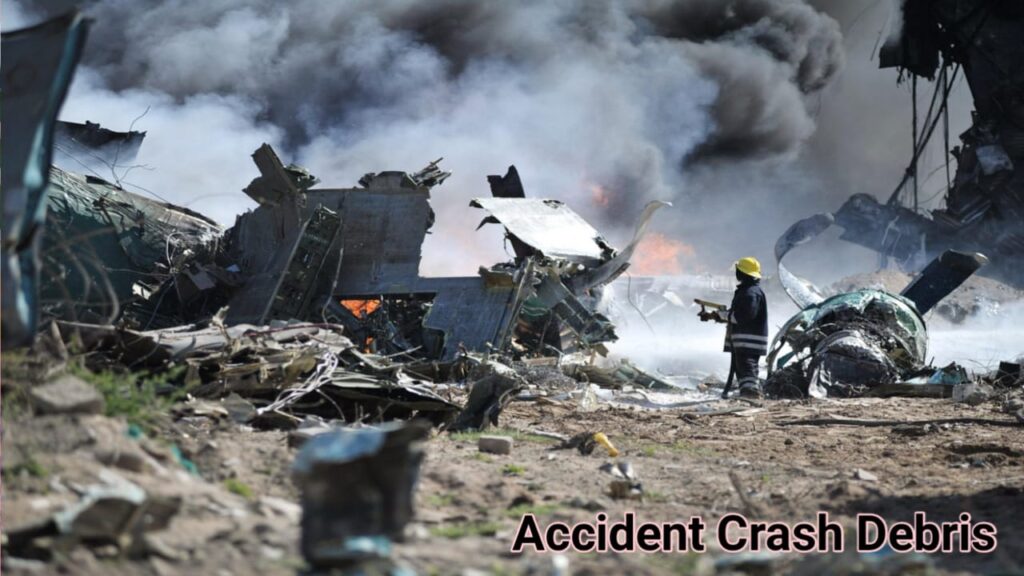On a tragic day for Indian aviation, Air India Flight AI 171, a Boeing 787 Dreamliner, crashed shortly after taking off from Ahmedabad Airport via route to London, United Kingdom. The crash, which took place in Gujarat, has been described as India’s most devastating air accident in the last two decades, triggering a wave of sorrow, shock, and serious questions about aviation safety, aircraft manufacturing, and India’s dependency on foreign aerospace giants.

The Flight and the Fatal Crash
- Flight Number: AI 171
- Aircraft Model: Boeing 787 Dreamliner
- Route: Ahmedabad (India) ➝ London (UK)
- Crash Site: Gujarat, shortly after take-off
- Crash Impact: Massive explosion due to large fuel load
- Visuals: Viral footage shows the aircraft engulfed in flames
The aircraft was on a long-haul international journey, which meant it was fully loaded with fuel—fuel that tragically fueled a massive explosion visible in horrifying visuals circulated online. The aircraft reportedly crashed into the roof of a doctors’ hostel, not a hospital, resulting in serious injuries to 15 medical professionals residing there.
Passenger Manifest: A Multinational Tragedy
| Nationality | Number of Passengers |
| Indian | 169 |
| British | 53 |
| Portuguese | 7 |
| Canadian | 1 |
| Total Onboard | 242 |
Among the passengers were high-profile individuals, including former Gujarat Chief Minister Vijay Rupani, who is feared to be among the casualties. While the exact number of fatalities has not been officially confirmed, dozens are feared dead, and many others remain critically injured.
A Black Day in India’s Aviation History
This is considered the first ever crash of a Boeing 787 Dreamliner, making it a significant event in global aviation. It is also being compared to the 2010 Mangalore crash, which killed 158 people. In response, Air India has blacked out its social media profiles, a gesture of mourning and respect for the victims and their families.
Investigation Underway: Black Box and Theories
Authorities have launched a comprehensive investigation, with the aircraft’s black box expected to reveal critical details. While online theories and rumors about sabotage circulate, officials urge restraint until verified findings emerge. Investigators are also looking into mechanical or manufacturing faults, especially in light of past incidents involving Boeing aircraft.
Boeing Under Fire: Global Pattern of Incidents
This crash is not an isolated case. Boeing has been in the spotlight for multiple safety-related incidents globally:
- December 2024: South Korea’s Jeju Air Flight 2216 crashed, killing 94 people. The cause remains unclear, with bird strikes speculated.
- Multiple Boeing flights have suffered malfunctions, turbulence-related injuries, and runway skidding in recent years.
The Whistleblower Who Warned the World
One name resurfacing in the wake of this tragedy is John Barnett, a former Boeing quality manager and whistleblower. His revelations:
- In a 2019 BBC interview, he alleged that:
- Substandard parts were being used in Boeing aircraft, including the 787 Dreamliner.
- Employees were pressured to meet deadlines, sometimes resulting in the installation of defective components.
- He specifically flagged emergency oxygen system failures in 787s.
Barnett’s concerns not only rocked Boeing’s credibility but also led to a plunge in its stock. In a chilling twist, Barnett later died under mysterious circumstances, with his family alleging a targeted campaign of harassment following his whistleblowing.
A Wake-Up Call for India: Need for Indigenous Aircraft Manufacturing
This heartbreaking event has revived debate over India’s heavy reliance on Western aviation giants like Boeing and Airbus. In contrast, China has already started phasing in its indigenous commercial aircraft, such as the COMAC C919, to reduce foreign dependency.
There is now a growing demand for a “Make in India” initiative in the aviation sector:
- In Build accountability through local manufacturing
- Ensure quality control from design to deployment
- Create a system that supports engineers and whistleblowers
- Move away from manufacturers allegedly prioritizing profit over safety
Conclusion: A National Tragedy, A Global Reckoning
The Air India Flight 171 crash is not just a national tragedy—it is a global reckoning. It raises profound concerns about aviation safety, corporate responsibility, and government oversight. As India mourns the loss of lives, it also stands at a crossroads: either continue on the path of dependency or take the bold leap toward self-reliance in aerospace technology.
For now, the nation waits for answers—from black boxes, from Boeing, and from itself.
Stay connected with us for the latest updates on aviation safety, global investigations, and national developments.





